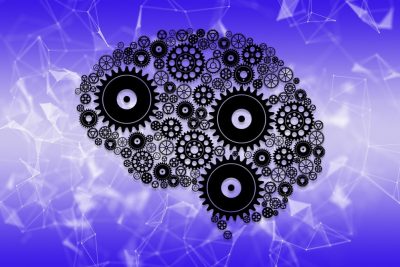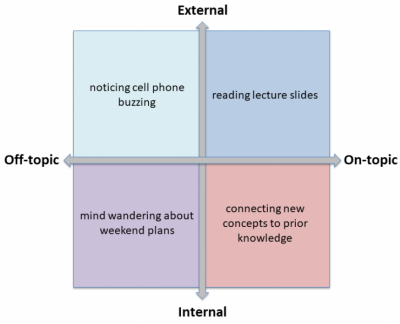Editor’s Note: This article about a new NSF grant, led by Ido Davidesco, originally appeared in UConn Today.

The science of distraction: Addressing the need to understand how students pay attention in virtual, as well as face-to-face, classrooms.
Picture a student as they watch a pre-recorded lecture in a college course. Their mind starts to wander to different thoughts – weekend plans, background noise, a social media feed. Before they realize it, they have no idea what the instructor is talking about.
It’s a familiar scenario for students and instructors alike. Maintaining attention for long periods of time is extremely challenging because attention, by nature, is dynamic and often shifts between external and internal states.
But could a little break from paying attention to the instructor be beneficial to the learning process? Learning sciences Professor Ido Davidesco thinks that might be the case, and the National Science Foundation (NSF) is funding his research with $1.3 million to find out.
Davidesco, an assistant professor in the Neag School of Education, is the recipient of an NSF Early Career Development (CAREER) Program award. This prestigious grant supports the research of early-career faculty who demonstrate remarkable potential to become leaders in their field. Additionally, the award seeks to support projects that actively engage students and the community.
“I hope to advance our basic understanding of attention but also have an impact on how we teach students in classrooms,” Davidesco says. “CAREER awards are designed to promote the integration of research and education, which is the main goal of this project.”
“I hope to advance our basic understanding of attention but also have an impact on how we teach students in classrooms.”
— Assistant Professor Ido Davidesco
This award marks a milestone for the University and the Neag School of Education. While UConn early career faculty have been very successful in winning NSF funding, Davidesco is the first Neag School professor to earn a CAREER Award.
“It is through the cutting-edge work of our faculty scholars — of which learning sciences expert Dr. Davidesco is a shining example— that the Neag School continues to stand at the forefront of education research,” says Jason G. Irizarry, dean of the Neag School. “Understanding how to foster effective student learning, particularly in STEM disciplines, remains as essential as ever, and this fascinating, interdisciplinary CAREER project holds such promise in providing practitioners and educators with a new level of real-world, foundational insight in this area.”

The project will focus on the role of internal attention as it applies to learning science. Davidesco says that it is currently unknown whether internal attention (e.g., pausing a lecture to allow students to quietly think about a problem) is beneficial or detrimental to learning.
“The hypothesis here is that internal attention can actually be beneficial to learning,” Davidesco says. “But it depends on how ‘thinking periods’ are used. For that reason, we plan to experimentally manipulate the frequency and duration of these ‘thinking periods’ as well as the guidance given to students.”
Davidesco’s team will use electroencephalography (EEG) to identify neural correlates of attention fluctuations that occur during lectures. They will also develop course-based undergraduate research experiences allowing undergraduate students to investigate their own attention states and associated brain activity.
“Undergraduate students will not only participate in our studies but also be involved in developing new research questions and conducting EEG experiments in their classroom,” Davidesco says.
“There is a need to understand better how undergraduate students pay attention in virtual and face-to-face classrooms, where most instruction still heavily relies on lectures,” Davidesco says. “I hope that this research will help instructors teach science more effectively.”
 Facebook
Facebook
 Twitter
Twitter
 LinkedIn
LinkedIn
